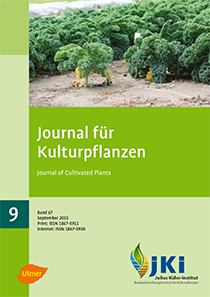Retracted Article: Conservation tillage in Germany: A solution of soil erosion
Keywords:
Conservation tillage, soil erosion, machine costs, working hours, Glyphosate, CO<sub>2</sub>-emissionAbstract
A Retraction Note to this article was published on December 18, 2019, https://doi.org/10.5073/JfK.2015.09.02.retraction
The loss of fertile soil by wind and water erosion is a worldwide problem. In Germany alone its 2 million hectares area which is categorised under highly endangered by soil erosion with the risk of annual soil loss of about 10 tones (cereal) and up to 50 tones per hectare (row crop). Minimizing the tillage operations and long term crop rotations with use of catch crop covering the soil surface with organic material reduces the negative effects on soil from wind and water. Additionally, it increases water absorption and water holding capacity of the soil which lowers the risk of soil erosion.
Calculating the planned costs from various crop rotations taking into account the direct costs and the labor and machinery costs based on expert interviews from North-East Germany and Low Mountains range regions show the positive ecological effects of conservation tillage along with the economic advantages for the farmers. With an adapted Glyphosate strategy in the crop rotations, machine and labor costs as well as CO2-emissions can be reduced under conservation tillage without affecting the yield of the crops. Conservation tillage associated with crop protection management is a good practice of crop production which makes it an essential contributor to a sustainable agriculture.
DOI: 10.5073/JfK.2015.09.02, https://doi.org/10.5073/JfK.2015.09.02
Downloads
Additional Files
Published
Issue
Section
License
The content of the journal is licensed under the Creative Commons Attribution 4.0 License. Any user is free to share and adapt (remix, transform, build upon) the content as long as the original publication is attributed (authors, title, year, journal, issue, pages).
The copyright of the published work remains with the authors. The authors grant the Journal of Cultivated Plants, the Julius Kühn-Institut and the OpenAgrar repository the non-exclusive right to distribute and exploit the work.







